

Articles
How To Practice Woodworking Joinery
Modified: August 28, 2024
Learn the art of woodworking joints with our informative articles. Discover various techniques and tips to create strong and beautiful woodwork projects.
(Many of the links in this article redirect to a specific reviewed product. Your purchase of these products through affiliate links helps to generate commission for Storables.com, at no extra cost. Learn more)
Introduction
Woodworking is a craft that has been practiced for centuries, and one of the essential skills in woodworking is the art of joinery. Joinery involves creating strong and secure connections between wooden pieces to construct various projects. A well-executed joint not only provides stability but also adds to the aesthetic appeal of the final piece.
In this article, we will explore some of the most common woodworking joints and how to execute them properly. We will discuss the different types of joints, their characteristics, and when to use them in your woodworking projects. Whether you are a beginner or an experienced woodworker, understanding these joints will greatly enhance your skills and allow you to create beautiful and durable pieces.
But before we dive into the specifics of each joint, it’s important to lay the groundwork for successful joinery. The key to achieving strong and precise joints lies in proper planning, measuring, and using high-quality tools. Take the time to select the right type of wood for your project and ensure that it is properly prepared and cut to accurate dimensions. Using the appropriate safety equipment and taking precautions is also paramount to prevent accidents during the woodworking process.
Now, let’s explore some of the most common woodworking joints and learn how to create them:
Key Takeaways:
- Mastering woodworking joints is essential for creating sturdy and visually appealing projects, from basic butt joints to intricate dovetail joints.
- Understanding the strengths and limitations of each woodworking joint is crucial for selecting the right one to ensure the quality and durability of your work.
Read more: Best Practices For Handling Tableware
Butt Joint
The butt joint is one of the simplest and most basic woodworking joints. It involves joining two pieces of wood by simply aligning the ends and gluing or nailing them together. This joint is commonly used in simple projects or when the aesthetics of the joint are not a primary concern.
To create a butt joint, start by preparing the ends of the two pieces of wood that will be joined. Ensure that they are square and smooth. Apply wood glue evenly to both end surfaces, then press the pieces together, aligning them flush. You can reinforce the joint with nails, screws, or dowels for added strength and stability.
One common variation of the butt joint is the mitered butt joint, also known as a miter joint. In this case, the ends of the wood pieces are cut at a 45-degree angle, creating a clean and seamless joint. This is often used in projects that require a more finished and professional look.
While butt joints are straightforward to create, they do have some limitations. They are not the strongest type of joint and may not be suitable for heavy loads or structural applications. Additionally, over time, the joint may weaken if not reinforced properly. Therefore, it’s important to consider the intended use and strength requirements of your project before using a butt joint.
When using a butt joint, it’s crucial to ensure proper alignment and clamping during the gluing process. Use clamps to hold the pieces tightly together until the glue dries completely. This will prevent any gaps or misalignment in the joint, resulting in a stronger and more visually pleasing connection.
Overall, the butt joint is a quick and easy way to connect two pieces of wood. While it may not be the most durable or decorative option, it serves its purpose well in certain applications. As you gain more experience in woodworking, you can explore more advanced joints to expand your repertoire and create more intricate and sophisticated projects.
Lap Joint
The lap joint is a simple yet effective woodworking joint that provides strength and stability. It involves overlapping two pieces of wood and connecting them securely. This type of joint is commonly used in box construction, frame assembly, and other applications where additional surface area for gluing or nailing is desired.
To create a basic lap joint, start by marking the desired width and depth of the overlap on both pieces of wood. Use a saw or chisel to remove the material within the marked area, creating a notch or groove. The depth of the notch should be equal to or slightly less than the thickness of the wood. Once the notches are cut, fit the two pieces of wood together, ensuring that the edges are aligned flush.
Next, you’ll need to secure the joint with glue or mechanical fasteners such as nails or screws. Apply glue to both surfaces that will come into contact with each other. Then, press the two pieces of wood together firmly, making sure that the joint is tight and the surfaces are fully bonded. If using fasteners, drive nails or screws through the overlapping sections to hold the joint securely.
There are different variations of the lap joint, including the half lap joint and the cross lap joint. In a half lap joint, each piece of wood is notched halfway through its thickness, creating a more visible joint. This type of joint is commonly used in cross beams, frames, and table legs. The cross lap joint, on the other hand, involves overlapping notches in a perpendicular arrangement. This creates a strong and stable joint, often used in the construction of bridges, furniture, and shelving units.
The lap joint provides good strength and can be easily modified to accommodate varying thicknesses of wood. It is essential to ensure proper alignment, a snug fit, and adequate glue coverage to maximize the joint’s strength. Using clamps during the gluing process can help maintain alignment and apply pressure to facilitate a strong bond.
Overall, the lap joint is a versatile and reliable method of joining wood pieces together. It is a popular choice in woodworking projects due to its simplicity and effectiveness. By mastering the lap joint, you can expand your woodworking skills and create sturdy and visually appealing structures.
Mortise and Tenon Joint
The mortise and tenon joint is one of the oldest and strongest woodworking joints, known for its durability and structural integrity. This type of joint is commonly used in furniture construction, door and window frames, and other applications where strength and stability are paramount.
The mortise and tenon joint consists of two parts: the mortise and the tenon. The mortise is a cavity or hole, typically rectangular in shape, cut into one piece of wood. The tenon, on the other hand, is a protruding tongue or projection that fits into the mortise. It is usually rectangular or square in shape and accurately sized to match the mortise.
To create a mortise and tenon joint, start by marking the positions of the mortise and tenon on the respective wood pieces. Use a chisel, router, or dedicated mortising machine to remove the wood material within the marked area for the mortise. It is important to make the mortise slightly deeper than the length of the tenon to ensure a secure fit.
Next, shape the tenon on the end of the corresponding piece of wood. The tenon should match the width and thickness of the mortise, allowing for a snug fit. Carefully remove the excess wood to accurately shape the tenon using a tenon saw, chisel, or table saw, depending on the size and complexity of the joint.
Once the mortise and tenon are properly prepared, apply wood glue to the surfaces and fit the tenon into the mortise. Ensure that the joint is aligned and the surfaces are fully bonded. You can use clamps or a mallet to secure the joint during the gluing process, ensuring a tight fit and even pressure distribution.
The mortise and tenon joint provides exceptional strength and resistance to lateral forces. It also allows for the disassembly of the joint, making it ideal for projects that may require repairs or alterations in the future. Additionally, the mortise and tenon joint can be reinforced with wedges or dowels for added durability and aesthetic appeal.
There are variations of the mortise and tenon joint, including through mortise and tenons, double mortise and tenons, and stub tenons. These variations offer different levels of strength and visual interest, providing flexibility for various woodworking applications.
In summary, the mortise and tenon joint is a versatile and time-tested method of joining wood pieces together. It requires precision and meticulous craftsmanship, but the result is a robust and visually pleasing joint that will stand the test of time.
Dovetail Joint
The dovetail joint is widely regarded as one of the strongest and most visually appealing woodworking joints. Renowned for its durability and aesthetic appeal, this joint is commonly used in fine furniture, cabinetry, and box construction.
The dovetail joint consists of interlocking trapezoidal-shaped pins and tails. The pins are formed by cutting triangular shapes with angled sides on one piece of wood, while the tails are created by removing the material between the pins on the adjoining piece of wood. When fitted together, the pins and tails interlock tightly, providing exceptional strength and resistance to pulling forces.
Creating a dovetail joint requires precision and careful craftsmanship. The first step is to mark and cut the pins. This is typically done using a dovetail saw and chisel or a router with a dovetail bit. The angles and spacing of the pins will determine the strength and appearance of the joint. It’s crucial to maintain consistent and accurate cutting to ensure a tight fit.
After the pins are cut, the next step is to mark and remove the material for the tails. This is done by using a coping saw or jigsaw to remove the waste wood, followed by careful chiseling and fitting to achieve a precise fit with the pins. The goal is to create a joint that is snug but not too tight, allowing for easy assembly without compromising its strength.
Once the pins and tails are cut and fit together, applying wood glue to the joint will strengthen the bond. Clamp the pieces together and allow the glue to cure fully. The resulting dovetail joint is not only incredibly strong but also visually striking, showcasing the craftsmanship and attention to detail in the woodworking project.
There are variations of the dovetail joint, including the through dovetail, half-blind dovetail, and full-blind dovetail. The through dovetail is where the joint is visible from both sides of the wood, adding to the decorative appeal. The half-blind and full-blind dovetails, on the other hand, are used when you want the joint to be hidden from one or both sides of the wood, respectively.
Mastering the dovetail joint takes practice and patience, but the end result is well worth the effort. It not only provides exceptional strength and durability but also adds a touch of elegance to any woodworking project. Whether you’re creating a drawer, a jewelry box, or a custom cabinet, incorporating dovetail joints will elevate the quality and craftsmanship of your woodworking endeavors.
Read more: How To Learn Woodworking
Box Joint
The box joint, also known as a finger joint or comb joint, is a versatile woodworking joint commonly used in box construction, drawer assembly, and other projects that require strong and precise interlocking connections between wooden pieces.
The box joint features interlocking square or rectangular fingers that are cut into the ends of the adjoining pieces of wood. These fingers alternate in a puzzle-like manner, creating a firm and secure joint. The more fingers in the joint, the greater the strength and stability.
To create a box joint, start by marking and cutting the fingers in one piece of wood. This is typically done using a table saw with a dado stack or a router with a straight bit and a jig. The depth and width of the fingers should match those of the adjoining piece to ensure a snug fit.
Once the fingers are cut, align the two pieces of wood and interlock the fingers. It’s important to ensure that the joint is tight and properly aligned before applying wood glue. The glue will further reinforce the joint, providing additional strength and stability. Using clamps or a vise to hold the pieces tightly together during the gluing process is crucial for achieving a strong and visually appealing box joint.
Box joints offer several benefits. Firstly, they provide an ample amount of surface area for gluing, resulting in a solid bond. Secondly, the interlocking fingers distribute the load evenly, making the joint resistant to pulling forces. Lastly, box joints have a distinctive visual appeal, with the alternating pattern of fingers adding a touch of elegance to any wooden project.
While box joints can be created with a consistent width and spacing, varying the dimensions can create interesting design variations. A wide box joint with narrow fingers is suitable for heavier loads and larger projects where strength is crucial. Conversely, a narrow box joint with wider fingers gives a delicate and decorative appearance, making it ideal for smaller items such as jewelry boxes.
Many woodworkers add contrasting wood species or colors to their box joints to enhance the visual impact. This technique highlights the interlocking fingers and adds a unique touch to the finished product.
Overall, the box joint is a reliable and visually appealing woodworking joint. With precise cutting and proper assembly, it provides a strong and durable connection between wooden pieces. Incorporating box joints into your woodworking projects will elevate their quality and showcase your craftsmanship.
Finger Joint
The finger joint, also known as a comb joint or box joint, is a type of woodworking joint that provides a strong and durable connection between two pieces of wood. This joint is commonly used in box construction, drawer assembly, and other applications where strength and precision are essential.
The finger joint consists of interlocking rectangular or square fingers, which fit together like puzzle pieces. The fingers are cut into the ends of the adjoining boards, creating a tight and secure joint. The more fingers in the joint, the greater the strength and stability.
To create a finger joint, start by marking the width and depth of the fingers on both pieces of wood. The fingers can be cut using a table saw with a dado stack, a router with a straight bit and a jig, or even a bandsaw with a specialized jig. It’s important to ensure accuracy and consistency in the sizing of the fingers to achieve a tight and precise fit.
Once the fingers are cut, align the two pieces of wood and interlock the fingers. The joint should be snug and properly aligned before applying wood glue. The glue will strengthen and bond the joint, contributing to its overall stability and durability. Clamping the pieces together during the drying process is crucial for achieving a strong and visually appealing finger joint.
One advantage of the finger joint is its ample gluing surface area. The fingers lock together, providing a large surface area for the adhesive to bond the pieces together, resulting in a strong and secure joint. This joint is also resistant to pulling forces, making it ideal for applications that require durability and strength.
The finger joint is visually appealing, with the interlocking pattern of fingers adding a touch of elegance to any woodworking project. It is often used in decorative boxes, cabinets, and furniture, where the joint’s aesthetic appeal is desired.
While the finger joint is commonly used in woodworking, it does have some limitations. It may not be as strong as a dovetail joint or as easy to create as a butt joint. Additionally, precision is crucial when cutting the fingers to ensure a tight fit and a clean appearance.
Overall, the finger joint is a reliable and durable woodworking joint. With the right tools and precision in cutting and assembly, it provides a strong and visually attractive connection between wooden pieces. By incorporating finger joints into your woodworking projects, you can achieve both structural stability and aesthetic appeal.
Rabbet Joint
The rabbet joint is a versatile woodworking joint commonly used in construction, cabinetry, and furniture-making. It involves cutting a recess or groove, known as a rabbet, into the edge or end of a piece of wood, which allows another piece of wood to fit into the recess, creating a flush and secure joint.
To create a rabbet joint, start by marking the desired depth and width of the rabbet on the edge or end of the wood piece. The depth will determine how far the adjoining piece will fit into the recess, while the width will determine the amount of contact between the two pieces.
There are several ways to cut a rabbet, depending on the tools available and the complexity of the joint. A common method is to use a table saw or a router fitted with a rabbeting bit. Carefully adjust the height and depth of the blade or bit to achieve the desired size of the rabbet. Run the wood piece along the blade or bit to remove the material and create the recess.
Once the rabbet has been cut, the second piece of wood can be fitted into the recess. Apply wood glue to the mating surfaces and fit the pieces together, ensuring that they are aligned and flush. Use clamps or other forms of pressure to hold the joint together until the glue dries completely.
The rabbet joint offers several advantages. It provides a strong and stable connection between wood pieces with a larger gluing surface area compared to some other joints. The joint is also relatively easy to create using basic woodworking tools, making it accessible to woodworkers of all skill levels.
Rabbet joints are commonly used to create drawers, cabinet frames, and bookshelves, where the joint helps secure the structural components of the piece. In addition, rabbet joints can be combined with other joints to add strength and stability to more complex woodworking projects.
There are variations of the rabbet joint, such as the stopped rabbet and the double rabbet. In a stopped rabbet, the recess does not extend the full length of the wood piece, creating a clean and finished appearance. A double rabbet, on the other hand, involves cutting rabbets on both pieces of wood to create a stronger and more secure joint.
When working with rabbet joints, it is crucial to ensure precise measurements and accurate cuts to achieve a tight fit. Proper alignment and clamping during the gluing process are also essential for a strong and visually appealing joint.
In summary, the rabbet joint is a versatile and commonly used woodworking joint. From cabinet-making to furniture construction, it offers a reliable and accessible method of creating flush and secure connections between wood pieces. By mastering the rabbet joint, you can expand your woodworking skills and create sturdy and visually appealing projects.
When creating woodworking joints, always ensure that the surfaces are flat and square to achieve a tight and strong fit. Use a combination square to check for accuracy.
Miter Joint
The miter joint is a widely-used woodworking joint that creates a clean, seamless connection between two pieces of wood at a specific angle. This joint is commonly used in projects where precise 45-degree angles are required, such as picture frames, molding, and trim work.
To create a miter joint, start by measuring and marking the desired angle on each of the wood pieces. Typically, a 45-degree angle is used for a standard miter joint, but other angles can be used depending on the project requirements. Use a miter saw or a miter box to cut the wood pieces at the marked angles, ensuring that the cuts are clean and precise.
Once the pieces are cut, align the freshly cut angled edges to form a perfect corner. The miter joint relies on the tight fit and the glue to secure the connection. It’s essential to ensure that the joint is square and that the two pieces fit together seamlessly. Use clamps to hold the joint together while the glue dries. Nail or screw the pieces together from the backside to provide additional strength and stability to the joint.
The miter joint offers a sleek and decorative appearance, as it creates a continuous surface between the two pieces of wood. When executed properly, the joint is nearly invisible, with no visible end grain or gaps. This makes it an ideal choice for projects where aesthetics are a priority.
Although the miter joint is visually appealing, it does have some limitations. The miter joint relies solely on the glue and fasteners for strength. It is not as strong as other joints, such as the dovetail or mortise and tenon joint. Therefore, it is important to use reinforcing methods such as splines or biscuits for added stability, especially for larger or heavy-duty applications.
The miter joint also requires precise measurement and cutting, as any inaccuracies can affect the fit and overall appearance of the joint. It is crucial to use a reliable miter saw or miter box and to double-check the angles before cutting the wood pieces.
In summary, the miter joint is a popular choice in woodworking when precise angles and a seamless appearance are desired. With careful measurement, accurate cutting, and proper assembly, it can create visually stunning projects such as picture frames, molding, and decorative trims. By understanding the strengths and limitations of the miter joint, you can utilize this joint effectively and incorporate it into your woodworking projects.
Read more: How To Practice Guns For Home Defense
Dado Joint
The dado joint is a strong and versatile woodworking joint that creates a groove or channel in one piece of wood to accommodate another piece of wood. This joint is commonly used in cabinetry, bookshelves, and other projects where additional stability and support are required.
To create a dado joint, start by marking the location and width of the groove on the wood piece that will house the dado. This can be done using a marking gauge, ruler, or pencil. Next, use a table saw, router with a straight bit, or dado blade to cut the groove to the desired depth and width. It is important to make straight and even cuts to achieve a precise and tight fit.
Once the dado is cut, the second piece of wood, often referred to as the dadoed piece, can be inserted into the groove. Make sure that the dimensions of the dadoed piece match the dimensions of the dado to ensure a snug fit. Apply wood glue along the surfaces that will come into contact and join the two pieces together, aligning them flush.
The dado joint provides excellent strength and support, as the groove creates a large surface area for the adhesive to bond the two pieces together. This joint is particularly useful in shelving units and cabinet construction, as it helps to distribute weight evenly and prevent sagging or bowing.
There are variations of the dado joint, including stopped dado, through dado, and rabbeted dado. In a stopped dado, the groove does not extend the full length of the wood piece, creating a more finished appearance. A through dado, on the other hand, involves cutting the groove through the full length of the wood, allowing the dadoed piece to pass completely through. A rabbeted dado includes a rabbet or recess along the edge of the groove, providing additional support and stability.
When working with dado joints, it is crucial to carefully measure and mark the location and dimensions of the groove to ensure a precise fit. Accurate cutting and proper alignment of the pieces are also essential for a strong and visually pleasing joint.
In summary, the dado joint is a reliable and versatile woodworking joint that provides strength and support. By using a groove or channel to join two pieces of wood, it creates a secure connection that is commonly used in cabinetry, shelving units, and other structural projects. Mastering the dado joint will allow you to create sturdy and functional wood pieces with added durability and stability.
Tongue and Groove Joint
The tongue and groove joint is a popular and versatile woodworking joint that’s widely used in flooring, paneling, and joinery applications. This joint provides a strong and seamless connection between two wooden pieces, creating a flush and durable bond.
The tongue and groove joint consists of two interlocking parts: the tongue and the groove. The tongue is a protruding rib on one edge of a wooden piece, while the groove is a corresponding channel on the other edge. When fitted together, the tongue slides into the groove, creating a tight and secure joint.
To create a tongue and groove joint, start by preparing the edges of the wood pieces that will have the tongue and groove. Use a router or a table saw with a dado blade to cut the groove on one edge of the wood, ensuring that it matches the size and depth of the tongue. Next, use a separate cutter or blade to form the tongue on the opposite edge of the other piece. Careful alignment and accurate cutting are essential to ensure a precise fit.
Once the tongue and groove are cut, apply wood glue to the surfaces that will come into contact. Fit the tongue into the groove and press the two pieces together, ensuring that they are aligned and flush. Use clamps or other forms of pressure to hold the joint securely while the glue dries.
The tongue and groove joint offers several advantages. It provides a strong and stable connection, as the interlocking nature of the joint helps distribute weight and prevent shifting or separation. The joint is also highly resistant to lateral forces, making it ideal for flooring and other applications that require durability.
In addition to its strength, the tongue and groove joint allows for expansion and contraction of the wood. This is particularly important in flooring applications, where the wood needs to be able to move with changes in temperature and humidity. The interlocking nature of the joint accommodates these movements while maintaining a secure connection.
Tongue and groove joints come in various configurations, including single tongue and groove, double tongue and groove, and center-match tongue and groove. Each configuration serves different purposes and offers different installation options.
When working with tongue and groove joints, it’s important to ensure precise measurements and accurate cuts to achieve a tight fit. Proper alignment and clamping during the gluing process are also essential for a strong and visually appealing joint.
In summary, the tongue and groove joint is a versatile and durable woodworking joint that provides strength, stability, and a seamless appearance. By incorporating this joint into your woodworking projects, you can create beautiful and long-lasting pieces, whether it’s flooring, paneling, or joinery applications.
Dowel Joint
The dowel joint is a reliable and versatile woodworking joint that provides strength and stability in furniture construction, cabinetry, and other woodworking projects. This joint involves joining two pieces of wood together using wooden dowels as the connecting elements.
To create a dowel joint, start by marking the location of the dowel holes on the wood pieces. Use a dowel jig or a marking gauge to ensure precise and consistent hole placement. Next, use a drill with a dowel bit to drill the holes to the desired depth. It is important to align the holes accurately to ensure a tight and secure fit.
After drilling the holes, apply wood glue to the dowels and insert them into the holes on one piece of wood. Make sure the dowels are fully coated with glue and fit snugly into the holes. Then, join the two pieces of wood together, gently tapping and aligning the dowels with the corresponding holes on the other piece. Apply clamping pressure to hold the joint together while the glue dries.
The dowel joint offers several advantages. It provides a strong and durable connection, as the dowels distribute the load evenly across the joint. The glue, combined with the mechanical strength of the dowels, creates a sturdy bond. This joint is particularly useful for applications where traditional joinery methods, such as mortise and tenon or dovetail joints, would be challenging or not practical to execute.
In addition to its strength, the dowel joint allows for disassembly and reassembly, making it advantageous for projects that may require future repairs or modifications. It also offers versatility in design, as multiple dowels can be used to strengthen and customize the joint according to the requirements of the project.
When working with dowel joints, it is important to use high-quality dowels and proper drilling techniques. Accurate alignment and a tight fit are crucial for achieving a strong and visually appealing joint. Additionally, clamping the joint during the drying process will ensure a tight bond and prevent any movement or shifting.
There are different types of dowels available, including wood dowels, metal dowels, and plastic dowels. Wood dowels are commonly used in woodworking projects due to their compatibility with wood and their natural aesthetic appeal. Metal or plastic dowels may be used in specific applications that require different properties, such as added strength or resistance to moisture.
In summary, the dowel joint is a reliable and versatile woodworking joint that provides strength, stability, and flexibility in joining wood pieces together. By incorporating dowel joints into your woodworking projects, you can create sturdy and durable pieces with the added advantage of future disassembly if needed.
Biscuit Joint
The biscuit joint is a popular and effective woodworking joint that provides strength and alignment between two pieces of wood. This joint is commonly used in cabinetmaking, furniture construction, and other projects where precise alignment and a strong bond are desired.
A biscuit joint involves inserting oval-shaped wooden biscuits into matching slots or grooves in the adjoining wood pieces. These biscuits act as alignment aids and provide additional surface area for the adhesive to bond the pieces together. The result is a strong and seamless connection.
To create a biscuit joint, start by marking the location of the biscuit slots on both wood pieces. Use a biscuit joiner or a router equipped with a biscuit cutter to cut the slots. The depth and width of the slots should match the size of the chosen biscuits. Carefully align the tool and make the cuts, ensuring that they are accurate and consistent.
Once the slots are cut, apply wood glue to the surfaces of the slots and insert the biscuits. Make sure the biscuits are fully coated with glue and fit snugly into the slots. Join the two pieces of wood together, gently tapping and aligning them to ensure a tight fit. Use clamps to hold the joint together firmly while the glue dries.
The biscuit joint offers several advantages. It provides excellent alignment between wood pieces, ensuring that they are flush and properly positioned. This is particularly useful for joining large panels, tabletops, and carcasses, where precise alignment is crucial for a professional and visually appealing result.
In addition to alignment, the biscuit joint increases the surface area for gluing, resulting in a stronger bond between the wood pieces. The biscuits also help to strengthen the joint, distributing the stress and preventing the wood from separating under pressure. This makes it especially useful in applications where joint strength is essential.
The biscuit joint allows for easy disassembly and reassembly if necessary. This is advantageous when working with large or complicated projects or when repairs or modifications are required.
When working with biscuit joints, it is important to choose the appropriate size of biscuits and ensure accurate placement and alignment of the slots. Proper gluing techniques, such as fully coating the biscuits with glue and applying clamping pressure during drying, are crucial for a strong and durable joint.
In summary, the biscuit joint is a reliable and versatile woodworking joint that provides alignment and strength in joining wood pieces together. By incorporating biscuit joints into your woodworking projects, you can achieve precise alignment, increase joint strength, and facilitate easy assembly and disassembly when needed.
Pocket Hole Joint
The pocket hole joint is a popular and versatile woodworking joint that offers strong and concealed connections between two pieces of wood. This joint is commonly used in furniture construction, cabinetmaking, and other projects where strength, speed, and ease of assembly are desired.
The pocket hole joint involves creating a pocket hole in one piece of wood that allows for a screw to be driven into the adjoining piece at an angle. This creates a secure and hidden connection between the two pieces.
To create a pocket hole joint, start by using a pocket hole jig to drill the pocket hole into the first piece of wood. The pocket hole jig guides the drill bit at the correct angle and depth to create a hole that is small and discreet, yet provides sufficient holding power. Next, attach the second piece of wood to the first one, aligning them properly. Drive a screw through the pocket hole and into the second piece, ensuring a tight connection.
The pocket hole joint offers several advantages. It is quick and easy to create, making it suitable for both professionals and beginners. The joint provides a strong connection, as the screw penetrates deeply into the second piece of wood, creating a sturdy bond.
One significant benefit of the pocket hole joint is the ability to conceal the screws. This creates a clean and aesthetically pleasing finish, eliminating the need for external fasteners or unsightly holes. The hidden nature of the joint makes it particularly suitable for projects where visibility and neatness are important, such as cabinets, furniture, and trim work.
The pocket hole joint also allows for disassembly and reassembly, which is advantageous when making adjustments or repairs. It provides flexibility and ease during construction, as components can be interconnected without the need for complex joinery techniques or specialized tools.
While the pocket hole joint is strong and efficient, it does have some limitations. It is not suitable for high-stress applications or load-bearing structures where more robust joinery methods, like mortise and tenon or dovetail joints, are typically used. Additionally, the pocket hole joint relies heavily on the quality of the screws used, so choosing the appropriate screw size and material is crucial for achieving a secure and durable joint.
In summary, the pocket hole joint is a versatile and efficient woodworking joint that provides strength, speed, and hidden connections between wood pieces. By incorporating pocket hole joinery into your woodworking projects, you can achieve strong and aesthetically pleasing results while enjoying the simplicity and ease of construction.
Conclusion
Woodworking joints are the backbone of any well-crafted and sturdy wooden structure. From basic joints like the butt joint and lap joint to more intricate joints like the mortise and tenon or dovetail joint, each one serves a specific purpose in ensuring the strength, stability, and aesthetic appeal of a woodworking project.
Throughout this article, we have explored some of the most common and essential woodworking joints, including their characteristics, applications, and techniques for creating them. We have discussed joints such as the butt joint, lap joint, mortise and tenon joint, dovetail joint, box joint, finger joint, rabbet joint, miter joint, dado joint, tongue and groove joint, dowel joint, biscuit joint, and pocket hole joint.
While each joint has its unique strengths and limitations, they all play a vital role in the construction of various woodworking projects. Whether you’re working on a small decorative piece or a large structural element, understanding the appropriate joint to use can make a significant difference in the overall quality and durability of your work.
As you continue to explore the world of woodworking, remember that choosing the right joint for your project is crucial. Consider the intended use, load-bearing requirements, and aesthetic considerations before selecting a joint. Practice and refine your techniques to ensure precise measurements, accurate cuts, and proper assembly to achieve strong, seamless, and visually appealing joints.
Ultimately, woodworking is a craft that combines artistry and technical skill. By mastering various woodworking joints, you can elevate your skills as a woodworker and create pieces that are not only functional but also beautiful and enduring.
So, whether you’re a beginner or an experienced woodworker, continue to learn, experiment, and embrace the art of joinery. With each successful joint you create, you’ll take another step towards becoming a true master of the craft.
Frequently Asked Questions about How To Practice Woodworking Joinery
Was this page helpful?
At Storables.com, we guarantee accurate and reliable information. Our content, validated by Expert Board Contributors, is crafted following stringent Editorial Policies. We're committed to providing you with well-researched, expert-backed insights for all your informational needs.




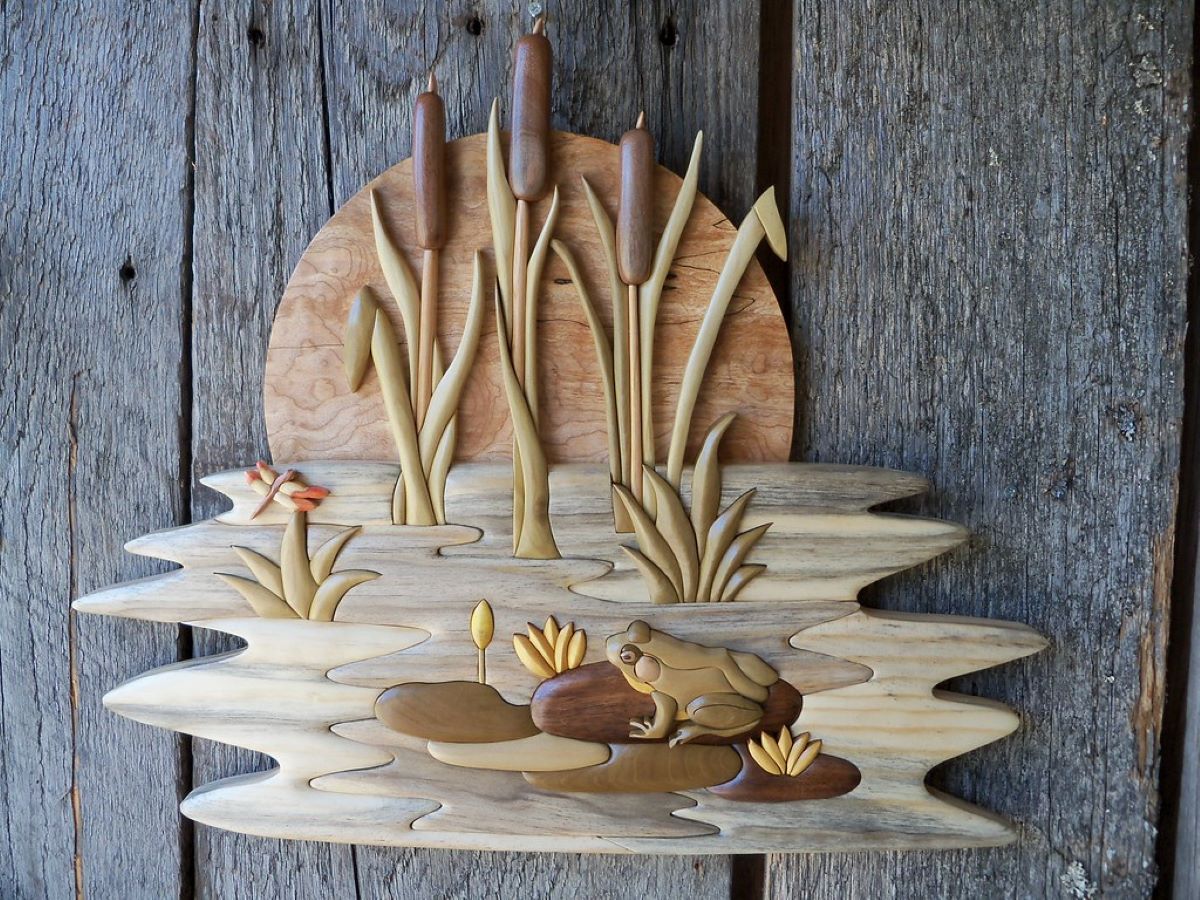
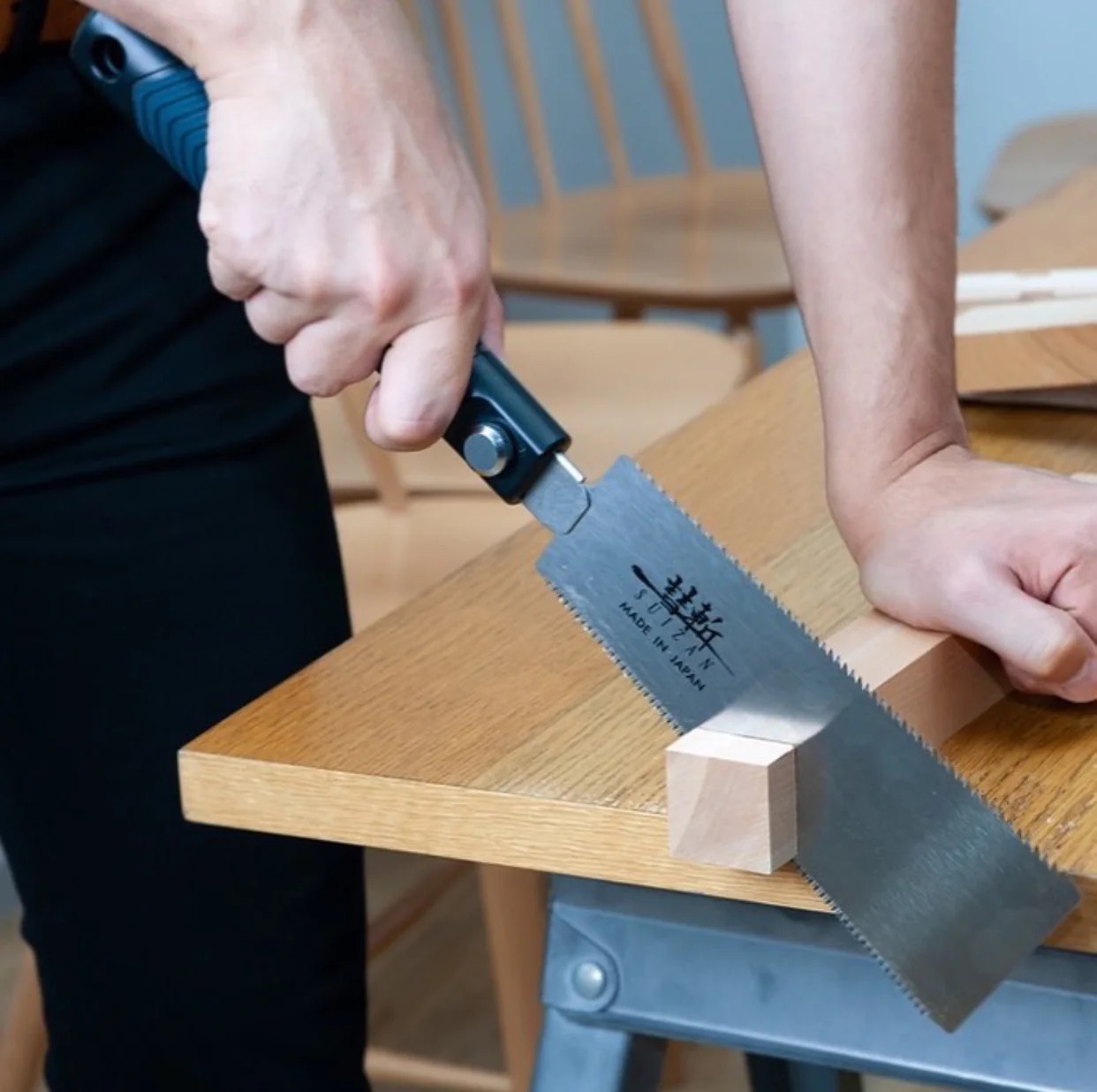
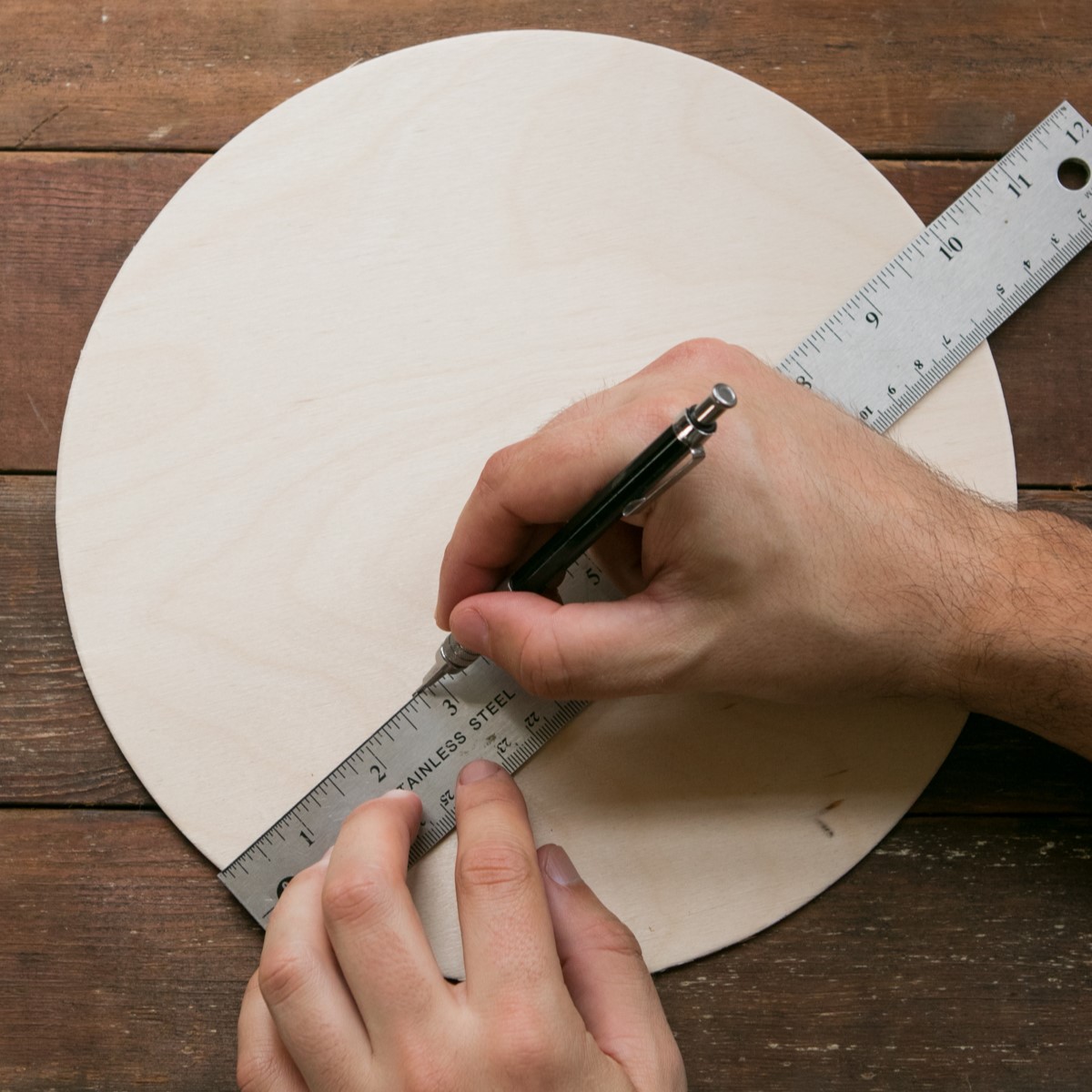

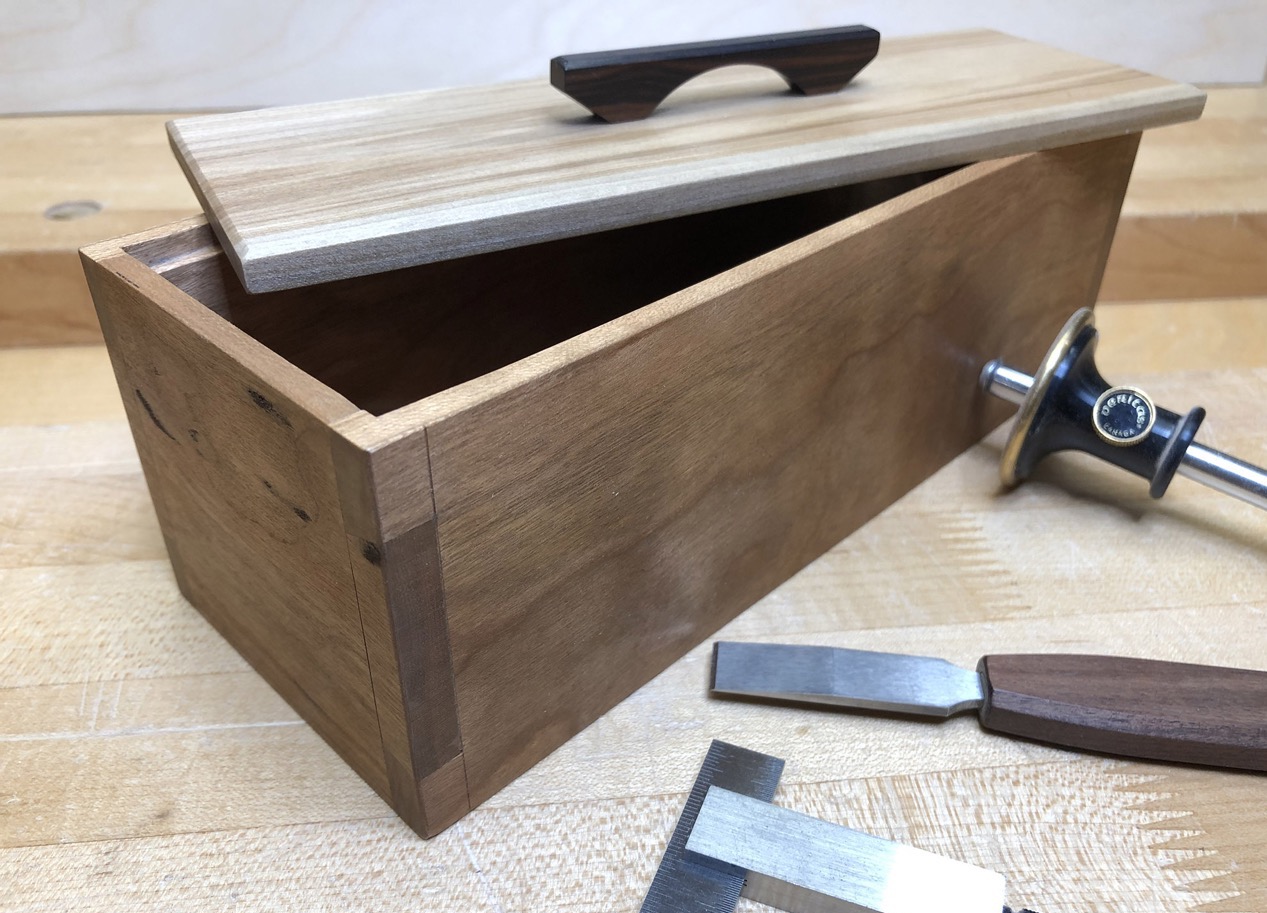

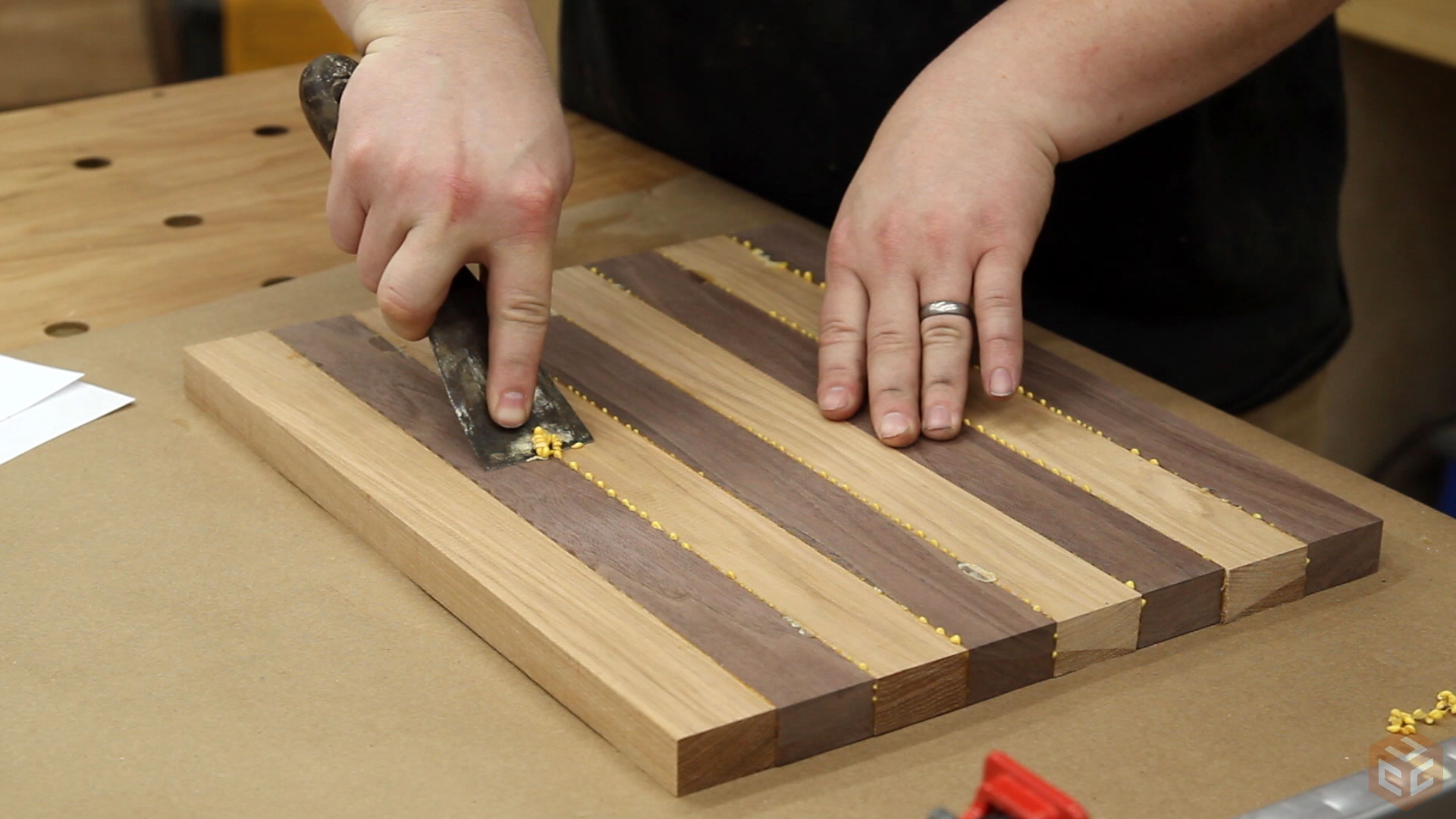
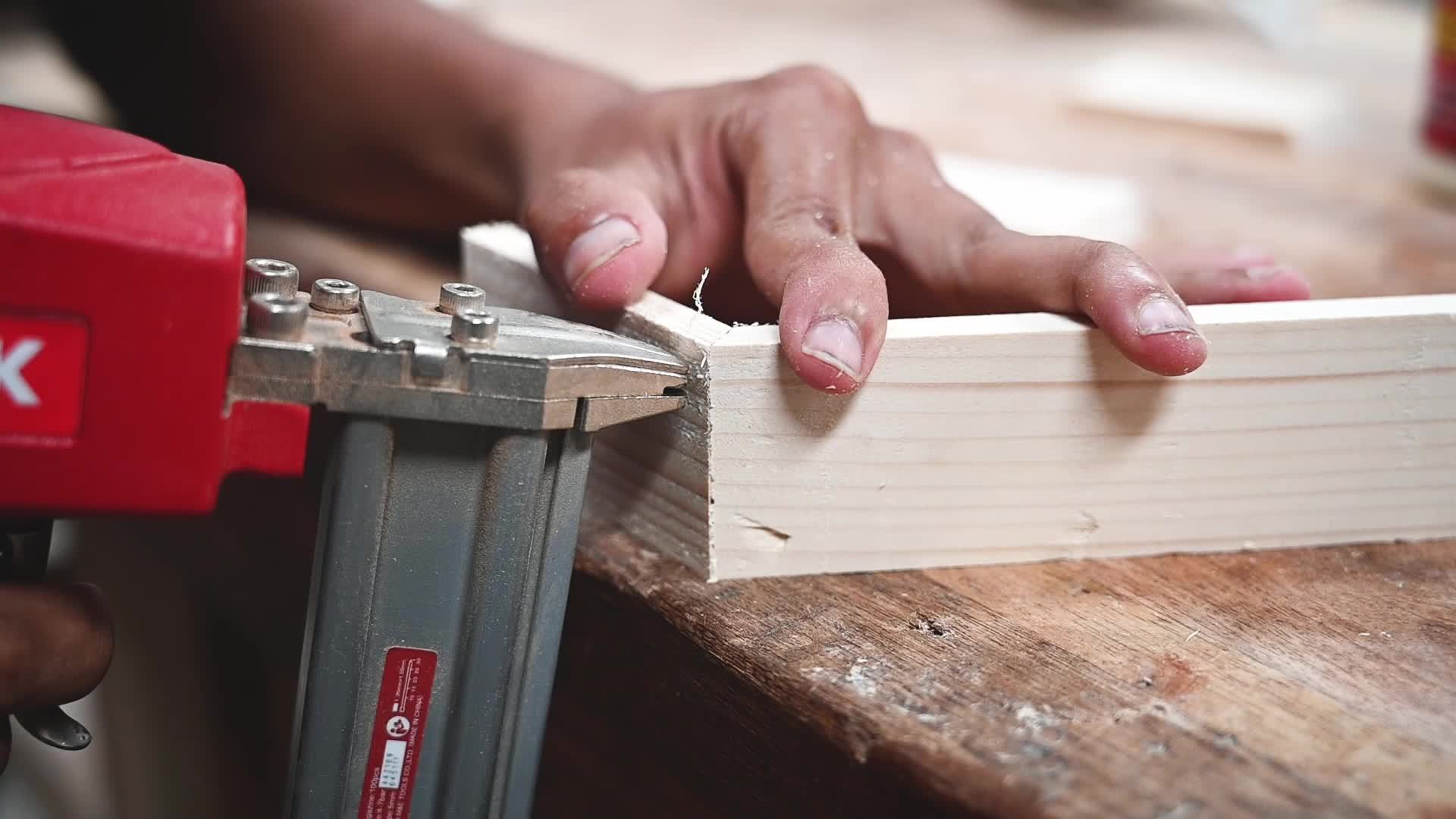

0 thoughts on “How To Practice Woodworking Joinery”